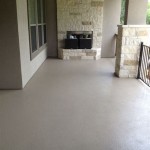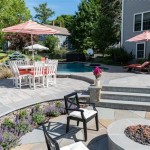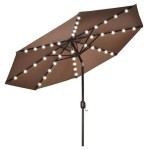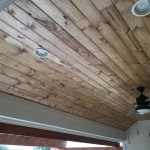Patio Brick Oven: A Comprehensive Guide
The patio brick oven represents a significant investment in outdoor living, offering both a functional cooking appliance and an aesthetic centerpiece for a backyard space. These ovens, traditionally crafted and often meticulously designed, provide a cooking experience distinct from conventional ovens and grills, yielding foods imbued with a unique smoky flavor and texture. This article will delve into the various aspects of patio brick ovens, covering their construction, benefits, usage, and maintenance.
Patio brick ovens are more than just a trend; they are a time-honored cooking method dating back centuries. Initially fueled by wood, these ovens achieve high temperatures quickly and maintain them efficiently due to the thermal mass of the brick or stone construction. This allows for rapid cooking, producing pizzas in mere minutes and roasting meats to perfection. Moreover, the radiant heat within the oven sears food, sealing in moisture and flavors that are often lost in other cooking methods.
Understanding the Construction and Materials
The construction of a patio brick oven fundamentally determines its performance and longevity. The materials used, the design of the dome, and the insulation employed all contribute to the oven's ability to retain heat and distribute it evenly. Traditionally, brick is the material of choice, but other materials, such as refractory concrete, clay, and even stone, are also commonly used. Each material possesses distinct properties related to heat retention, durability, and aesthetic appeal.
Brick ovens are typically constructed using a dome-shaped design. This shape is crucial for efficient heat distribution and reflection. The curvature of the dome ensures that heat is evenly dispersed across the cooking surface, minimizing hot spots and promoting uniform cooking. The size of the dome also impacts the oven’s capacity and heating characteristics. Larger domes require more fuel to heat but can accommodate larger cooking vessels and higher food volumes.
Refractory materials are essential components of a brick oven. These materials, specifically designed to withstand extremely high temperatures without cracking or degrading, are used to construct the inner dome and cooking surface. Refractory bricks, such as firebricks, possess a high alumina content, which contributes to their superior heat resistance. Some modern ovens utilize refractory concrete, which offers a more uniform and seamless interior surface, eliminating potential weak points between individual bricks.
Insulation is another critical factor in the construction of a patio brick oven. Insulating the oven properly minimizes heat loss, allowing it to reach and maintain high temperatures for longer periods with less fuel consumption. Insulation materials, such as ceramic fiber blankets, vermiculite, or perlite, are often applied around the exterior of the dome and under the cooking surface. Adequate insulation also reduces the risk of surface burns and contributes to a more energy-efficient cooking process.
The foundation of the oven is just as crucial as its construction. A robust and level foundation is essential to prevent cracking and shifting of the oven over time. Concrete slabs are the most common type of foundation, ensuring a stable and durable base for the heavy structure. The foundation should also be properly insulated from the ground to prevent moisture from wicking up into the oven structure.
Benefits of Owning a Patio Brick Oven
Beyond the unique flavors imparted to food, the benefits of owning a patio brick oven are numerous. These encompass both the cooking experience and the social aspects of outdoor entertaining. The high temperatures achieved in a brick oven allow for incredibly quick cooking times, especially for pizzas. The radiant heat creates a crisp crust and perfectly melted toppings, a result difficult to replicate in conventional ovens. Roasted meats benefit from the intense heat, developing a flavorful crust while remaining moist and tender inside.
Wood-fired cooking imparts a distinctive smoky flavor to food that is highly prized by chefs and home cooks alike. The type of wood used significantly influences the flavor profile, with hardwoods like oak, maple, and fruitwoods imparting nuanced and complex flavors. Experimenting with different wood types can lead to a wide range of culinary possibilities. This element of customization allows for an unparalleled depth of flavor unavailable in other cooking methods.
The patio brick oven also serves as a focal point for outdoor gatherings. The process of firing up the oven, preparing the food, and enjoying the meal together enhances the social aspect of cooking. Guests can gather around the oven, sharing conversations and experiencing the warmth and ambience of the fire. This creates a relaxed and engaging atmosphere, fostering a sense of community and shared enjoyment.
From a practical standpoint, a well-maintained brick oven can also increase the value of a property. The addition of an outdoor kitchen, complete with a brick oven, is often viewed as a significant upgrade by potential buyers. It represents an investment in lifestyle and enhances the overall appeal of the outdoor space. While the initial cost of a brick oven can be substantial, the long-term benefits, both culinary and social, can justify the investment.
Usage and Maintenance Considerations
Operating a patio brick oven effectively requires understanding the principles of heat management and fuel control. Lighting the fire requires careful attention to detail, starting with a small amount of kindling and gradually adding larger pieces of wood as the fire intensifies. The type of wood used also plays a crucial role in the oven’s performance. Seasoned hardwoods burn cleaner and produce more consistent heat than softwoods, which can produce excessive smoke and creosote buildup.
Maintaining the correct temperature within the oven is essential for optimal cooking results. Thermometers designed for high-temperature ovens can be used to monitor the internal temperature accurately. Adjusting the airflow to the fire regulates the heat. Opening the vent allows more oxygen to reach the fire, increasing its intensity, while closing the vent restricts airflow, reducing the heat. Consistent monitoring and adjustments are necessary to maintain the desired temperature throughout the cooking process.
Cleaning a patio brick oven is a straightforward process but needs to be performed regularly. After each use, the ash and embers should be removed from the oven floor using a specialized ash rake. Periodically, the soot buildup on the interior walls should be cleaned with a wire brush. This prevents the accumulation of creosote, which can be a fire hazard. Regular cleaning ensures the oven maintains its efficiency and prevents unwanted flavors from affecting the food.
Protecting the brick oven from the elements is crucial for its long-term durability. Exposure to rain, snow, and extreme temperatures can cause the brick or stone to crack and deteriorate over time. Covering the oven with a waterproof cover when it is not in use protects it from the elements and extends its lifespan. Regular inspections for cracks or damage should also be conducted, and any necessary repairs should be addressed promptly.
Seasoning the oven refers to the process of gradually heating the oven over time to remove any residual moisture from the construction materials. This process is crucial for preventing cracking and ensuring the oven’s longevity. It typically involves starting with a small fire and gradually increasing the size and duration of the fire over several days or weeks. This allows the moisture to evaporate slowly, preventing any sudden stresses on the oven’s structure.

Large Wood Fired Oven W Base Buschbeck Usa

Outdoor Stone Kitchen With Large Firebrick Oven And Rotiss Buschbeck Usa

Outdoor Combo Fireplace And Oven Round Grove S

Oven Brick Build An Outdoor For Your

Outdoor Fireplace And Ovens Round Grove S

Outdoor Oven Fireplace Round Grove S Fiesta Patio Furnishings

Outdoor Oven Fireplace Options And Ideas

Outdoor Brick Oven Archives Disabatino Landscaping

Chicago Brick Oven Diy Built In Wood Fired Cbo 750 Kit 38 X 28 Cooking Surface O Outdoorkitchenpro

Outdoor Ovens From The Oven Experts Brickwood








